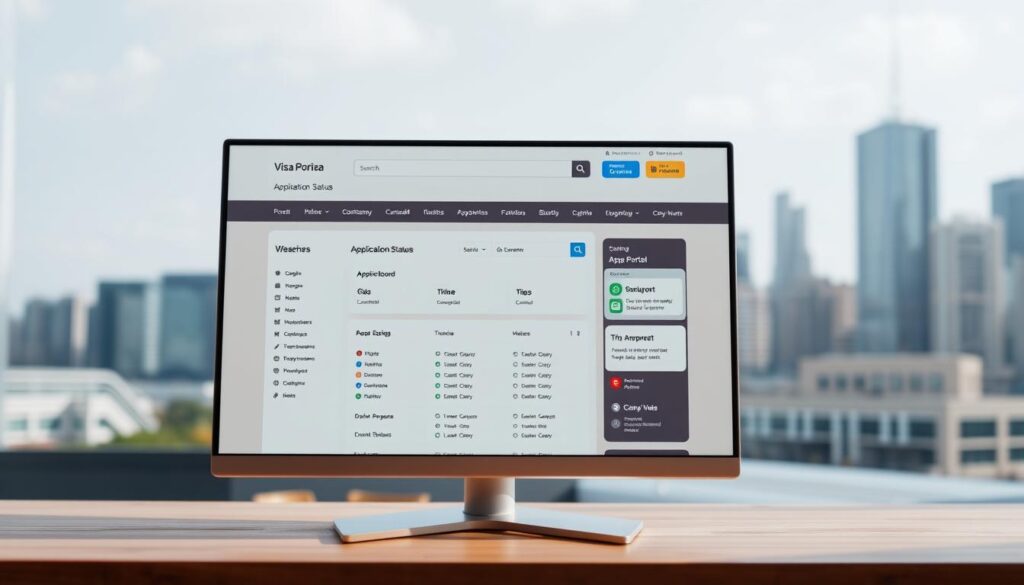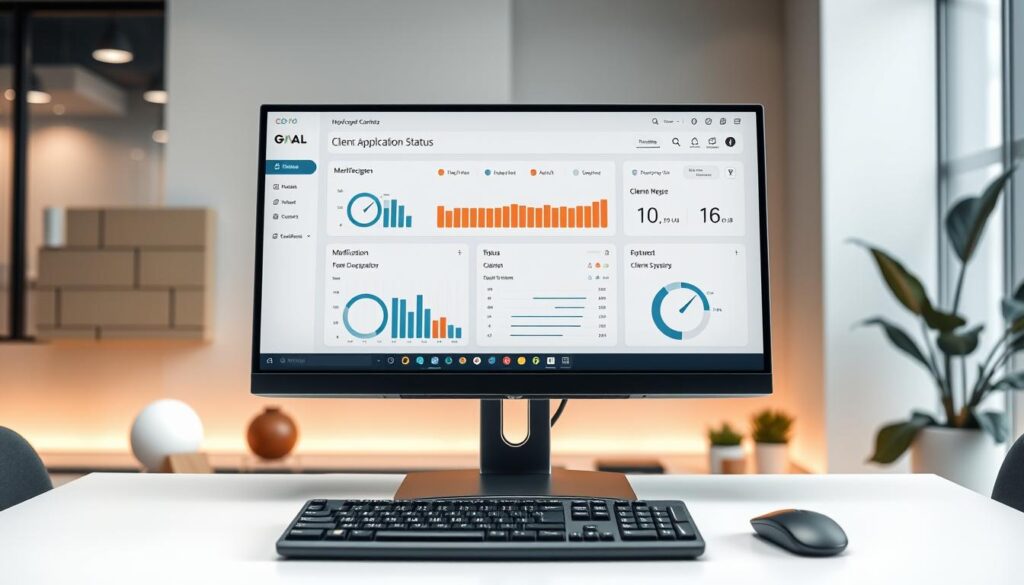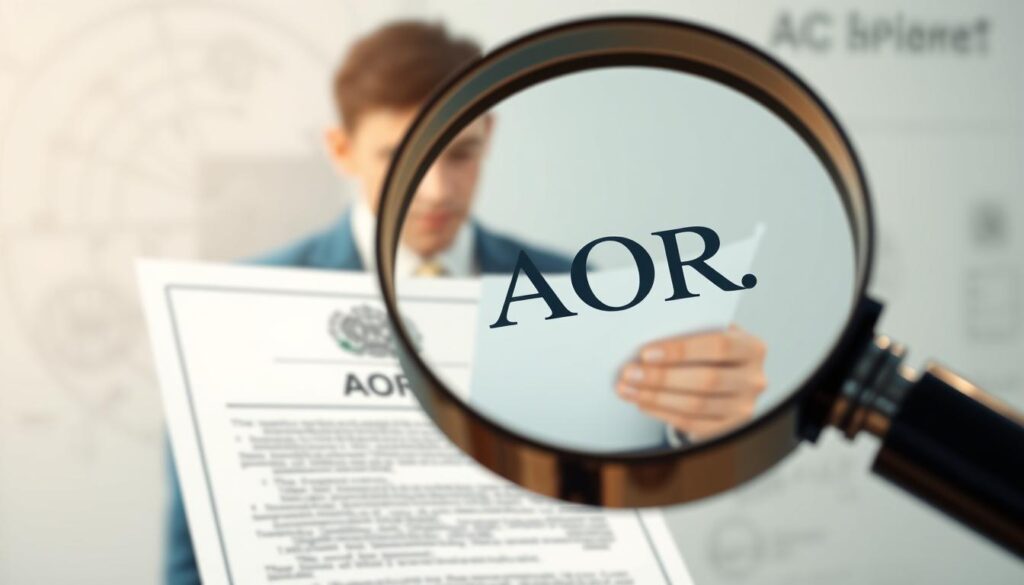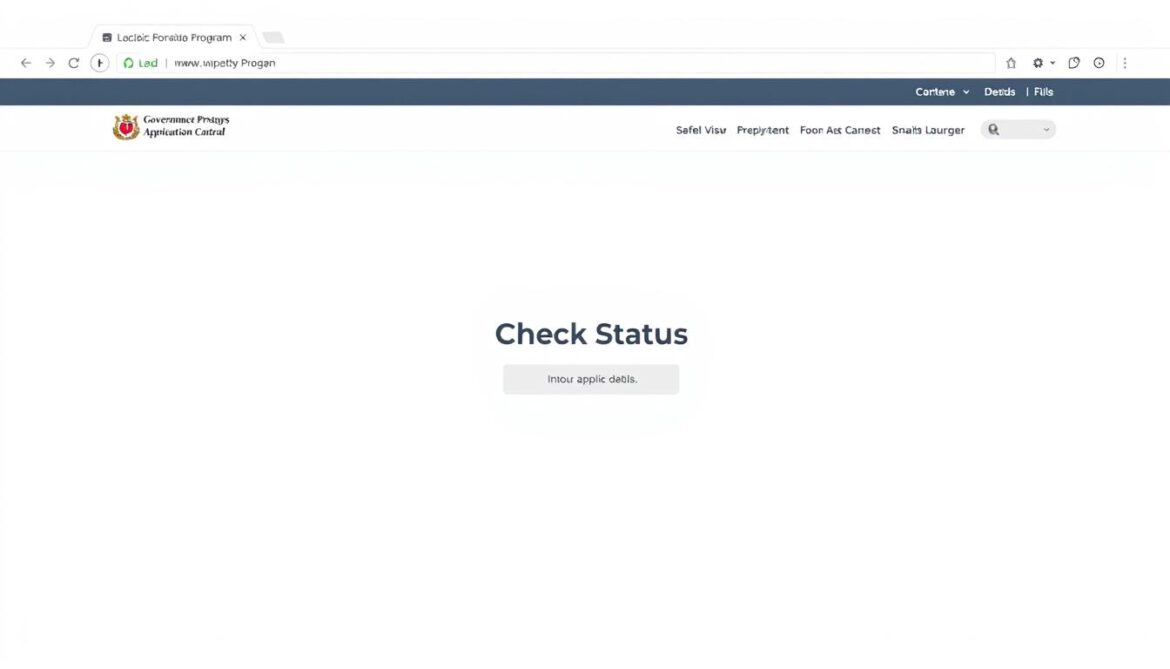Did you know over 1.2 million immigration applications are processed in Canada yearly? This staggering number highlights why tracking your submission matters. Delays or missing updates could mean missed opportunities. Fortunately, the government’s online portal offers clarity during this critical process.
The system provides daily updates through two primary tracking tools. One displays real-time progress, while the other confirms receipt of documents. Knowing which tool to use saves time and reduces confusion. You’ll need specific identification numbers to access your file, so keep them handy.
Whether you applied online or via mail, this guide simplifies the process. Learn how to interpret status codes like “In Progress” or “Decision Made.” Avoid common errors, such as using outdated links or mistyping information. Clear instructions ensure you stay informed at every stage.
Key Takeaways
- Official tracking tools provide daily updates for submissions
- Different status checkers serve unique purposes depending on your submission type
- Required documents include application numbers and personal identifiers
- Separate processes exist for online and paper-based submissions
- Status updates follow predictable timelines after key milestones
- Technical issues often resolve by clearing cache or using supported browsers
Introduction to Canada Sponsorship Application Status
Knowing where your file stands helps in planning your next move. Immigration processes involve multiple steps, and delays can impact timelines. The government’s visa portal acts as your main resource for real-time updates.

Purpose of This Guide
This resource simplifies how to monitor your submission through official channels. You’ll learn to interpret updates like “Review in Progress” or “Additional Documents Required”. Regular checks ensure you never miss critical requests.
Who Benefits From Tracking?
Primary users include sponsors managing family reunification cases and their relatives abroad. Legal representatives and immigration consultants also rely on these tools. Below are key groups and their needs:
| Stakeholder | Key Benefit | Action Required |
|---|---|---|
| Sponsors | Monitor processing stages | Prepare financial proofs |
| Sponsored Family | Plan relocation steps | Submit medical exams |
| Authorized Agents | Update clients promptly | Verify document validity |
Frequent status reviews help avoid delays caused by expired forms or missing paperwork. Over 83% of cases with regular updates meet processing deadlines, according to recent data. Use secure accounts to maintain control throughout your journey.
Overview of the Canada Visa Portal
Navigating immigration processes becomes simpler with the government’s centralized digital platform. This secure online tool lets you track submissions, submit documents, and receive instant notifications. Over 90% of users report faster response times compared to paper-based methods.

Key Features of the Portal
The system combines multiple services into one dashboard. You can view real-time progress, upload requested files, and message officials directly. Two-factor authentication protects sensitive data while maintaining easy access.
Automated alerts notify you about deadline changes or missing paperwork. The interface adapts to your needs, whether you’re checking basic updates or reviewing detailed case notes. Regular system upgrades ensure compatibility with all major browsers and devices.
| Feature | Benefit | User Action |
|---|---|---|
| Live Status Tracking | Monitor every processing stage | Check weekly for changes |
| Secure Document Upload | Submit files instantly | Keep scans under 4MB |
| Direct Messaging | Resolve issues without delays | Enable email notifications |
Creating an account takes under seven minutes using existing identification numbers. Once registered, you’ll manage multiple submissions through a single profile. The portal’s design reduces paperwork errors by 68%, according to recent user surveys.
Understanding Application Status Tracking Tools
Choosing the right monitoring system transforms how you follow your submission’s journey. Two primary platforms exist – each serving distinct purposes. Let’s break down their strengths so you can maximize their value.

Client Application Status (CAS) Tool Explained
The CAS platform acts as a universal hub for multiple immigration pathways. It covers citizenship requests, permanent residency confirmations, and replacement identity documents. Unlike newer systems, it updates every 24 hours and works for paper-based submissions.
You’ll need your unique client identifier (UCI) number to access details here. One advantage? It shows historical data from previous submissions. This helps track long-term progress across different processes.
Application Status Tracker (AST) Overview
Designed for granular updates, the AST tool delivers deeper insights for specific cases. Family reunification files and Express Entry candidates benefit most. The interface highlights exact processing stages – like background checks or document reviews.
“The tracker refreshes every 15 minutes during business hours,” notes an immigration advisor. While limited to online submissions, its color-coded progress bars simplify complex workflows. Combine both tools for complete visibility.
| Feature | CAS Tool | AST Tool |
|---|---|---|
| Update Frequency | Daily | Every 15 minutes |
| Best For | Multi-process tracking | Real-time specifics |
| Access Method | UCI + Personal Info | Linked Online Account |
Pro tip: Bookmark both platforms. Cross-reference updates when awaiting critical decisions. This dual approach prevents missed alerts during crucial phases.
Step-by-Step Guide to Check Your canada sponsorship application status
Tracking your submission’s progress requires knowing which tools to use and how to access them. Whether you filed digitally or via mail, these methods ensure you stay updated without delays. Follow this roadmap to navigate both scenarios effectively.

Registering for an Online Account
Start by visiting the official visa portal. Click “Sign Up” and provide your email address. You’ll need three details:
- Your submission number
- Unique Client Identifier (UCI)
- Personal information matching your original forms
Note: Existing CAS tool users must create new credentials. The system won’t accept previous login details. Double-check entries to avoid typos – mismatched data causes 37% of access issues.
| Account Type | Required Info | Processing Time |
|---|---|---|
| New Registration | Email, UCI, submission number | Instant access |
| Linked Paper File | Mailing date, birth country | 24-hour verification |
Connecting Mailed Submissions
Already submitted physical documents? Link them to your digital profile in four steps:
- Log into your secure account
- Select “Link existing submission”
- Enter exact details from your paper forms
- Submit for verification
“Ensure names and dates match perfectly. Even minor discrepancies can delay linking by 5-7 business days,”
advises an immigration consultant.
Stuck? Clear your browser cache or try incognito mode. Most connection errors resolve within two attempts. Once linked, you’ll see real-time updates alongside online files.
Enable two-factor authentication during setup. This adds an extra security layer while viewing sensitive progress details. Regular password changes further protect your data.
Navigating the IRCC Secure Account
Managing your immigration process starts with mastering the IRCC secure account system. This digital hub centralizes updates, messages, and document requests – replacing traditional mail. Unlike submission profiles used for filing, this portal focuses solely on tracking progress.
Setting Up and Signing In
Create your credentials using the unique client identifier (UCI) from your confirmation letter. First-time users need three elements:
- Email not linked to other government accounts
- Personal details matching original forms
- Two-factor authentication setup
“Always use the ‘Sign-In Partner’ option if you have online banking,” advises an immigration consultant. “It’s faster than creating new login details.”
| Account Type | Purpose | Update Frequency |
|---|---|---|
| Submission Profile | File initial documents | One-time use |
| Secure Tracker | Monitor progress | Real-time |
Your dashboard shows active cases, messages from officials, and next steps. Click “View Profile” to update contact information or password settings. Enable notifications to receive alerts when statuses change.
Security tip: Review “Recent Activity” monthly. Report unrecognized logins immediately through the portal’s help center. Regular audits prevent unauthorized access to sensitive case details.
Acknowledgement of Receipt (AOR) Details
Your journey through immigration procedures gains momentum with the Acknowledgement of Receipt (AOR). This official notice unlocks detailed tracking capabilities and confirms your submission entered the review pipeline. Without it, you’re limited to basic details like submission dates and sponsor information.

When to Expect Your AOR
Processing times vary, but most applicants receive this confirmation within 8-12 weeks of submission. Factors influencing timelines include:
- Current case volumes in your immigration category
- Completeness of initial documentation
- Submission method (online vs. paper)
Seasonal spikes can extend waits by 3-4 weeks. Use the visa portal’s “Processing Times” tool for category-specific estimates.
The Importance of Receiving an AOR
This document serves two critical functions:
- Verifies your package passed initial completeness checks
- Provides unique identifiers needed for full status tracking
| Pre-AOR Access | Post-AOR Access |
|---|---|
| Submission date visibility | Real-time progress updates |
| Sponsor name confirmation | Document request alerts |
“Consider your AOR the green light for active monitoring. Until then, focus on preparing next steps like medical exams or police certificates.”
Misplaced your AOR? Retrieve it through your secure account’s message center. The reference numbers within become essential for all future communications and updates.
Managing Various Immigration Program Applications
Understanding how different pathways intersect helps streamline your efforts. The visa portal supports multiple immigration streams simultaneously. This flexibility lets you track family reunification alongside study permits or employment authorization.
Sponsorship, Study, and Work Permit Applications
Each type has unique tracking features. Family-based cases show relationship verification stages. Educational permits highlight institution approvals. Employment files display employer compliance checks.
Prioritization varies between programs. Economic pathways often process faster than humanitarian cases. Use the table below to compare key aspects:
| Program Type | Average Processing | Tracking Features |
|---|---|---|
| Family Reunification | 12-24 months | Sponsor eligibility checks |
| Study Permits | 8-16 weeks | Institution confirmation |
| Work Permits | 6-14 weeks | Employer validation |
Other Immigration Pathways
Special programs like caregiver pilots or refugee protections have dedicated portals. These require separate logins but share core tracking functions. Humanitarian cases may show additional document requests for vulnerability assessments.
Pro tip: Bookmark each program’s dashboard. Color-code updates to manage multiple applications efficiently. Most users handle 2-3 active files without confusion when organized properly.
Comparing Online Tools: AST vs. CAS Tool
Choosing the right tracking platform can save hours of confusion. The immigration system offers two primary options: the Application Status Tracker (AST) and Client Application Status (CAS) tool. Each serves distinct purposes, with unique strengths for different scenarios.
Key Differences and When to Use Each Tool
The AST tool shines for real-time updates on family reunification cases. It refreshes every 15 minutes during work hours, showing exact stages like background checks. One immigration consultant notes:
“AST’s color-coded progress bars simplify complex workflows better than any other platform.”
In contrast, the CAS tool covers broader program types. It handles citizenship requests, permanent residency confirmations, and replacement documents. While updates occur daily, this tool works for both digital and paper submissions.
| Feature | AST Tool | CAS Tool |
|---|---|---|
| Update Speed | Every 15 minutes | 24-hour cycles |
| Best For | Detailed case tracking | Multi-program overview |
| Access Requirements | Linked online account | UCI + personal details |
Use AST when monitoring family-based cases requiring immediate action alerts. Turn to CAS for reviewing older submissions or multiple program statuses. For complete visibility, cross-check both tools weekly.
Pro tip: Bookmark each platform. AST excels during critical phases like document requests, while CAS helps track long-term processes. Together, they provide 360-degree monitoring without gaps.
Ensuring Application Completeness Before Status Checks
Proper preparation transforms how you monitor your immigration journey. Start by collecting all correspondence related to your submission. Your unique client identifier (UCI) and case number act as gateways to detailed updates.
Gathering Required Documents
Locate your UCI or reference number from the Acknowledgement of Receipt (AOR) email or letter. These identifiers verify ownership and unlock real-time progress tracking. Keep these details visible when accessing online tools.
Organize supporting paperwork like passport copies and submission confirmations. Mismatched information between documents and your profile causes delays. Cross-check names, dates, and identification numbers for consistency.
Create a digital folder for quick access during status reviews. Include scanned copies of critical items such as payment receipts and confirmation pages. This proactive approach minimizes errors and streamlines the monitoring process.



